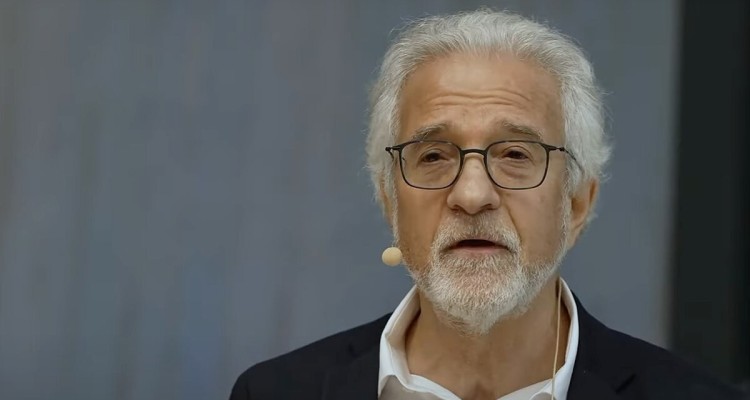Georges Clemenceau, France’s newspaper editor-cum-prime minister, endures in historical memory as an implacable foe of antisemitism. Clemenceau’s ties to Cornelius Herz, commitment to the Dreyfusard cause, and choice of Georges Mandel as protege earned him the lasting enmity of antisemites, who accused him of being indebted to “the Jewish syndicate.” The Editions de l’Antilope is now reprinting in France one of Clemenceau’s works from the height of the Affair, Au pied du Sinai (At the Feet of Sinai, untranslated). The modern reader might be surprised to find in this collection of short stories and monologues rhetoric that belies the text’s status as a pro-Jewish apologetic. Clemenceau regurgitates a bevy of antisemitic motifs in At the Feet of Sinai (1898). How to explain this? Philippe Zard argues that at the turn of the century antisemites and anti-antisemites both drew on “a broad repertoire of shared representations” vis-a-vis Jews. The modern reader will have to choose his own attitude toward such representations. He can show the complaisance of the assimilated Jews who were Clemenceau’s contemporaries and brothers-in-arms. Or he can own his distaste for some truly cringeworthy and stereotyped depictions. The disgust reaction has merit, inviting us to comprehend both antisemitism and anti-antisemitism as shape-shifting phenomena rather than as timeless constants. Both mutate on the basis of concrete situations, and we must decipher these metamorphoses. Discerning in the anti-antisemitism of the past the traces of antisemitic bias alerts us to the fact that, in our own time, too, what purports to refute antisemitism might harbor a neo-antisemitism.
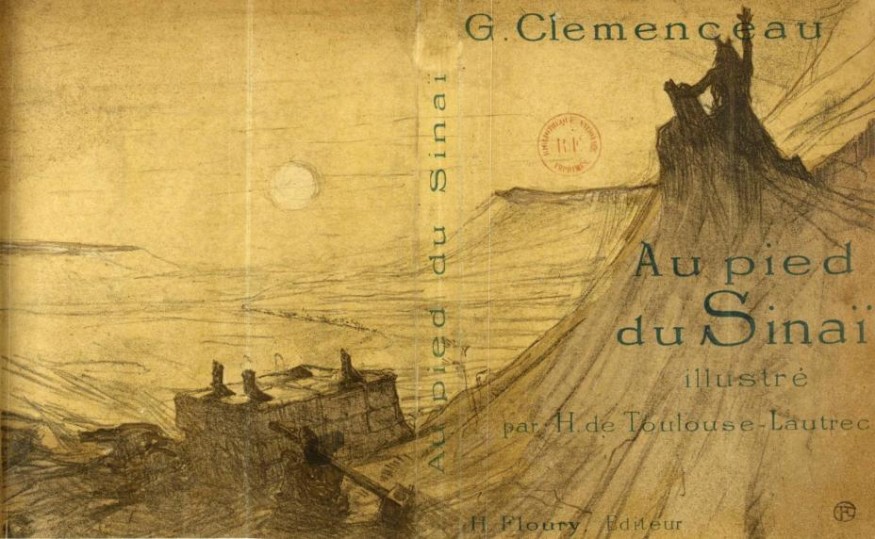
One must be wary of certain words. Thus, the uninformed reader who would launch himself into reading Georges Clemenceau’s Au pied du Sinaï today, armed only with the concepts of antisemitism and philosemitism, would inevitably make a mistake. He would tend to believe that antisemitism is proportional to the prejudices of race, religion or morals that one harbors against Jews. This seems logical enough. And by this standard, certainly, a few compromising pages of from Clemenceau’s collection would strike fear into the hearts of the boldest of publishers. France’s hate speech laws could prove the basis of a prosecution for antisemitism. But there lies a chasm between the modern reader and the editor of the fin-de-siecle. And this is the chasm of Auschwitz.
Let us be clear: no today is suggesting the loss of a golden age in which antisemitism could have been honorable. Such a claim remains in the grave with Georges Bernanos, who memorably lamented that Hitler had “dishonored” antisemitism, the idée fixe of his mentor, the antisemitic publisher Edouard Drumont. But the perimeter and the parameter of antisemitism have both been dramatically altered by the traumatic events of the 20th century.
Let us examine the fin-de-siecle for greater context in this regard. The runaway success of Drumont’s antisemitic potboiler, La France juive (1886), represented but the culmination of the popular reach and financial success of anti-Jewish rhetoric in fin-de-siecle. Antisemitism had been revived by the Panama Scandal of the 1880s, which had ensnared a number of politicians, including Clemenceau, who lost his seat in the National Assembly. He was smeared for his ties to Cornelius Herz. Anti-Jewish riots broke out in Algiers a decade later amid the Dreyfus Affair in a spasm of violence that would be termed a youpinade (Translator’s Note: This is a play on words referring to punitive expeditions, ratonnades, undertaken against the colonized peoples of Algeria. Youpin is the equivalent of “kike” in French). Books on the “Jewish question” were being published by the dozen. S. Brodziak recalls that in 1883, Albert Savine wrote a book on the Jewish question, the same Albert Savine who “even created the ‘anti-Semitic library.[1]’” Worse still, the title of Clemenceau’s book (Au pied du Sinaï) and that of the first of his short stories (“Le baron Moïse”) were a strange echo of an anti-Jewish novel by the pseudonymous Gyp, Le Baron Sinaï. The ambiguity of Clemenceau’s opus extended to publisher Charles Marpon’s choice of Toulouse-Lautrec as illustrator. Toulouse-Lautrec was a notorious antisemite and foe of Dreyfus, and the cover page reflects that, sporting an image of the Golden Calf.[2] These are odd choices indeed for what the future prime minister intended as a defense of the Jews.
Clemenceau’s book comes to us from a time when antisemites and anti-antisemites both drew on a broad repertoire of shared representations vis-a-vis Jews.
But there are deeper reasons for which the tome leaves us gobsmacked. At the Foot of Sinai was written by an authentic republican, who, after believing in Dreyfus’s guilt, was about to enter (October 1897) the fray as a tribune for “a revision” of the verdict. The modern reader naturally assumes that this commitment to Dreyfusism would entail avoiding denigrating statements in regard to Jews. But this would be a naive and anachronistic hope. Clemenceau’s book comes to us from a time when antisemites and anti-antisemites both drew on a broad repertoire of shared representations vis-a-vis Jews. What made the difference between the sides was often not so much the vices and defects attributed to “Israel,” but rather the causes, scope and remedies associated with such negative attributes. Some of the texts of this period, such as Léon Bloy’s Le Salut par les Juifs (1892) and Bernard Lazare’s L’Antisémitisme, son histoire et ses causes (1894) lend themselves to double readings. Lazare’s remains a favorite of some antisemites, despite the author’s status as perhaps the century’s most erudite defender of the Jews. What is there to say except that, in the constellation of political ideas, there is no simple and timeless configuration of antisemitism. Not even the consistent presence of Judeophobic images and rhetoric in this case.
The six stories in Au pied du Sinaï attest to this. Clemenceau’s stay in Carlsbad, a Czech town in the Austrian Empire, was the starting point for his discovery of the Jewish towns of Galicia in August and September 1896. He was then still smarting from his defeat in the last parliamentary elections and had returned to the vocation of journalist, having founded La Justice. He would go on to edit L’Aurore, the paper in which Zola’s J’accuse would soon appear. He still had ambitions to the status of literary figure, and in the same year as Au pied du Sinai appeared, he also published a poorly-received novel, Les Plus Forts. Jews then sat the torm center of political debate in France. So it is no surprise that Clemenceau wanted to know more about the life of the children of Israel. Three of the texts in the collection (“In Israel,” “Impressions of Galicia,” and “Busk”) are in the genre of the travelogue: the exotic chronicle competes with the ethnological observation, leavened with moral and political considerations for the French public. A fourth story, “Schlomé le batailleur” (“Schlomo the Brawler”), presented as “a true story” written “under the dictation of a witness,” could almost pass for a translation of a Yiddish tale. Clemenceau added two stories unrelated to the Galician material, one in a satirical vein (“How I Became Presbyopic”), the other resembling a parable (even though it was loosely based on authentic facts): “Baron Sinai.”
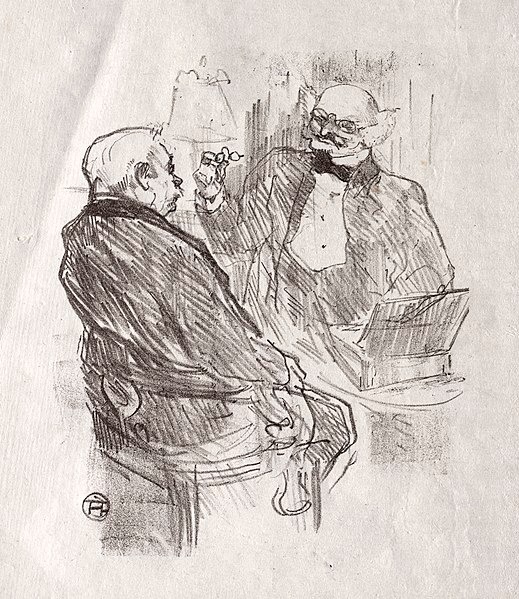
Clemenceau was a man of his time. What he discovers in the miserable villages of Eastern Galicia, on the borders of Russia, is first of all a rich exotic material. One should not underestimate the taste of the time for these ethnographic descriptions of the “Jew of the East,” of the Polish or Russian shtetls: a few years later, the Tharaud brothers would make a very lucrative specialty of it.[3] But there is only one step from these distant lands to domestic politics: the “Jew of the East,” with his caftan and bow ties, was both the antithesis and the poor relation of the assimilated Israélite that Franco-Judaism had set up as a model. Through the Hasidic “Jewry” of Galicia, Clemenceau discovered the other side of the coin of a Jewish reality overexposed on the domestic political scene.
To approach the Jewish question under the Third Republic was to witness a cyclical play between three opposing forces: – first, the surge of enthusiasm that led a majority of Jews (sometimes requalified as Israélites) to enter the patriotic and republican dance to become Frenchmen like the others through the subsidiarization (or even erasure) of their particularism, including the abandonment of the outward manifestations of belonging; – second, the development in reaction of a political antisemitism (culminating in that Dreyfus Affair that had just begun): Finally, the periodic arrival of waves of Ashkenazi immigrants, fleeing misery and pogroms, regularly reactivating in their co-religionists an awareness (or memory) of cultural and religious otherness that the assimilation process had begun to make them forget, and at the same time replenishing the antisemitic repertoire.
[Under the French third Republic] the use of the notion of the “Jewish race” hardly makes it possible to differentiate between antisemitic authors and those who, whether Jewish or not, are not
This dynamic of identity and otherness, resemblance and dissimilarity, oblivion, permanence and return of the original repressed makes “race” one of the dominant categories of discourse. The word is fundamentally amorphous and protean in the nineteenth century, bearing the ancient meanings of people, caste, lineage. But the term is already laden with biological determinism at this point. The end of the century saw the development of a racializing thought (Jules Soury), obsessed by heredity, eager for taxonomy and hierarchy. But all these meanings, old and new, were more often superimposed than successive. The use of the notion of the “Jewish race” hardly makes it possible to differentiate between antisemitic authors and those who, whether Jewish or not, are not: Charles Péguy, Marcel Proust, Albert Cohen, Léon Blum would use the term over and over again, no less than the right-wing nationalist Maurice Barrès, though with quite different intentions. Everyone, more or less, believed in races, even those who, like Clemenceau, used the colonial debate, in which he disputed Jules Ferry’s imperialist policies, to inveigh against the idea of “superior races” and their alleged rights. In Au pied du Sinaï, the notion of race renders legible the whole volume, including the first story, in which Baron Moïse de Goldschlammbach, “half Rothschild, half Hirsch,” who has been duly baptized like his father (and even ennobled by the pope himself), still figures as a Jewish character.[4]The racial notion presupposes that Jewishness does not disappear with baptism: the unconscious of the group, the mentality, the voice of the depths still speaks when faith has been lost.
There would therefore be a “Jewish race,” even if, aware of the perils of racism, Clemenceau emphasized that this race… was not really a race, that the Jews were in reality a people composed of several races, “much more mixed than they believe themselves to be” and than “those who make war on them believe.” Jews are a composite race in which “pure Semites,” Slavs (Renan had relayed the Khazarian hypothesis), Tartars and Mongols are blended together, so that the type of “classic Jew, with a vulture’s beak” is only one specimen among many. But these types exist, with their graces and especially their defects: thus these beautiful young girls “with big Oriental eyes” will soon become ugly because of the “hasty maturity of the race” – a combined effect, no doubt, of political tribulations, social miseries and a “consanguinity” of which, as a physician, Clemenceau does not fail to be alarmed.
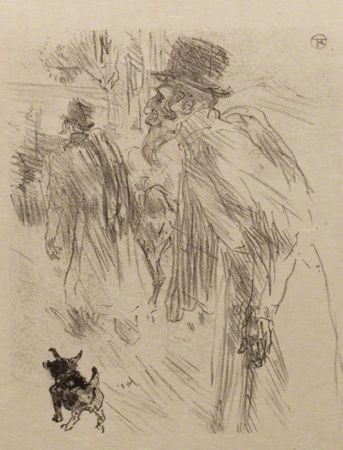
Let us consider that aside from the exoticism, the author fixates on the eyes of these miserable Jews, on the “burning look,” on the “incredible intensity of life in agile black eyes, exorbitant, rolling flames.” And this “tragic and persecuted race” is also “the enduring race,” determined to live even in the worst conditions: this seems worthy of admiration. So much so that, in a breathtaking flight of fancy, Clemenceau’s supreme argument to the antisemites is not so much about the iniquity of their cause as about the vanity of their hopes: “We shall not destroy the Jews. Israel, having emerged alive from the Middle Ages, can no longer be suppressed.”
This race or this people is also the product of a history, bearer of a mentality, of “virtues and vices”: it is above all these radically foreign customs, observed in this sort of natural reserve that are the miserable Galician villages, which attract the curiosity, sometimes amused and mocking, sometimes understanding and sympathetic, of Georges Clemenceau. The chronicler does not mince his words: “What dominates in Busk, after the duck and the goose, is the filthy Jew, worried and gentle, eager for all the tasks of industry and trade.” The emphasis placed on the lack of hygiene and filth throughout the story could be a plausible testimony to the misery of these populations (a reality that no one disputed, and to which, a few decades later, Albert Londres would bear essential witness). But the complacent taste for sordid details cannot be ignored: it goes from the dirtiness of the “prayer coats” that one would be forbidden to wash to the repulsive mucus of a faithful of the assembly, passing by “stinking alleys” and the doubtful hygiene of an otherwise upscale restaurant. .. The tracker of orientalist stereotypes will find his content: he will see mentioned the “common fund of Asian negligence of the body,” smiles necessarily obsequious, or (about Polish Catholic women, this time) of “the perverse innocence […] of Slavic femininity”… The sarcasm spares neither the shaggy beards, nor the ritual locks (payes), which the author claims to use as a hygrometric indicator.
Clemenceau, with regard to the scrupulous observance of orthodox laws and rites, blames “Talmudic fanaticism”; he more often than not criticizes Pharisaism, “odious to Jesus”; in the first short story, he portrays a “Baron Moses” who, touched in the heart by an inner revelation, “feels that he must give, give everything, as ordered by one of his race, whom his race put on the cross.” This is the dominant narrative of the time, concentrated in a rough anadiplosis: Vatican II’s renunciation of the deicide charge is still long off. It should be pointed out that, for an atheist who does not consider Jesus to be God, assuming this pre-conciliar version of Holy history, however untenable it may seem today, is in no way equivalent to ratifying the accusation of deicide.
In order to read At the Foot of Sinai in a way other than with the distorting optical instruments of our century, it is better to bypass the harshness of these judgments. If the radical republican holds, like most of his peers, religious rites as superstitious nonsense that will be swept away by political progress, let us credit him with doing, on occasion, a work of pedagogy: explaining here the deep reasons that push the most devout Galician Jews to try to escape the military service of the Empire and taking the time to recall the centrality of “study,” “the true nobility of Israel”; further describing, with curiosity, the “swinging movement” of the faithful, interested, if not captivated, by a liturgical gesture (he describes the prayer of the “Amida”) imposing to honor the Creator “with his ‘muscles’ and his ‘bones'”, as illustrated by the unsurpassable devotion of a “strange old man” praying with “his whole body” before engaging in acts of charity. The evocation, beyond the incompressible part of persiflage, even ends with a rather advantageous comparison of the Judaic rites with certain devout practices encountered among Christians, such as the “otherwise extravagant scenes” observed among American Methodists. Fair to the core, Clemenceau disputes that it is more ridiculous to “shake your head like a duck” in order to honor God than to kiss “the feet of a plaster Christ smeared with horrible colors.” The picture of Polish Catholics in prayer who “pray with their feet” (which they have dirtied) is no more charitable than that of Jews at worship.

This is how it is: all bigots are grotesque. And the particularizing exoticism turns into a critical mirror against Christians imbued with their alleged theological supremacy. Incidentally, Clemenceau makes a point of reminding us that Christianity and Judaism are “first cousins,” to the point of ending one of his stories with a “Jewish joke” about the converted son of God (Jesus) – a lesson of which he will soon be able to remind those antisemitic Catholics who pour out curses on Abraham’s offspring, forgetting that “the first places” of their paradise “are occupied by the Jews”[5]… And Pharisaism, he reminds us again, through the example of the bourgeois of Carlsbad whose houses display signs “protecting against begging,” is no less Christian than Jewish, if it designates the good conscience of the wealthy who declare themselves in good standing with the law, even while perched on a heap of iniquities.
For the real purpose of At the Foot of Sinai is not so much the mystery of Israel as a reflection on injustice. Here again, it is important to make a distinction. The flourishes of the last pages are still saturated with the ambiguities of the time. Clemenceau admits “the enormous power of Israel in capitalist Christianity today,” fears that it will increase, and affirms that he deplores “any control of race”: he seems to make concessions to Drumont, but also, well upstream, to Proudhon, to Fourier, to Toussenel (Les Juifs, rois de l’époque), by advancing that the “happy or disastrous faculties” of this people have “made it king of the present society”… The denunciation of the Jewish bank was hardly a show, neither on the Catholic right, nor on the left of the future tenors of Dreyfusism: the anti-Jewish remarks of the young Jaurès were much more vehement, and even the Zola of L’Argent had taken up, without excessive embarrassment, a tendentious version of the crash of the Union Générale bank. The original permeability between anti-capitalism and antisemitism does not need to be emphasized, nor its empirical connection, nor its historical causes and ideological extensions. When Clemenceau ventures to say that “there is no more astonishing story” than that of the “accursed Semite” who left to “conquer the world,” he is taking almost literally a phrase from… Bernard Lazare himself (“They entered modern societies not as hosts, but as conquerors”). One has the right, and undoubtedly the duty, to be saddened by this.
But this sentiment must be seen in the context of a global vision. Clemenceau – like Bernard Lazare, whom he admired – admits certain postulates of antisemitism, while redefining its contours. The line between satire, even if severe, and dubious extrapolation is undoubtedly crossed, paradoxically, only at the very moment when Clemenceau launches into what may pass for the peroration of his work, which seems to be addressed to the antisemites and their dreams of pogroms. Already partially quoted at the beginning of this article, this passage deserves to be reproduced more widely:
It is not that there is any denying the enormous power of Israel in capitalist Christianity today. All things remaining the same, the action of the enduring race, so wonderfully productive of energy, can, it seems, only increase. From Aryan idealism, I would hold this fact to be a misfortune. Especially since each people has its own good and bad characteristics, any control of race seems to me to be contrary to the profound interests of diverse humanity. But from the fact that the faculties of a race have miraculously adapted themselves to the social order of the present time, – as different from yesterday’s order as it will undoubtedly be from tomorrow’s order, – what can be said except that the race and the economic order, changing, will give us other results. The Jews will not be destroyed. The Sultan himself, with his three hundred thousand massacred Armenians, will be defeated by Armenia. Israel, having emerged alive from the Middle Ages, cannot be suppressed. Instead of condemning him on the grounds that his happy or unhappy faculties have made him king of the present society, instead of crying out cowardly that we need his death to find a place in life, why don’t we try more simply, more justly, to make a more equitable, more disinterested code, in which the force of egoistic appropriation – whether Jewish or Christian – is less effective, or less crushingly tyrannical on the human mass. Then the Judaism of Judea, if its harshness has made it king of a society of barbaric egoism disguised in the garb of charity, and the no less triumphant Judaism of the Christian to whom destiny allows him to push his luck, will no longer know the evil temptations of today, and will know how to contain itself within the limits of an individualistic development compatible with the superior notion of social justice. Without violence, without massacres, without bonfires, Semitism, if it remained as we see it today among the children of Shem and Japheth, would no longer present the perils that are reported today. […] Thus the wretched – Christians of Paris or Jews of Busk – will be effectively helped in their personal effort against the very heavy yoke of their big brothers of all races to whom the present law is content to say: “Heap up, dominate, abuse”; and who heap up, and dominate, and abuse. It will be enough to amend the Christians, still masters of the world, so as not to need to exterminate the Jews who are in the process of stealing the throne of opulence coveted by men of all times and all countries.
All the complexity of the subject lies there, but it is that of a time when the discourse on the “soul of nations,” on the “psychology of peoples” or on the spirit of the race authorized peremptory generalizations; where the financial power of a few Jewish capitalists was dubbed, without any further precaution, “the power of Israel,” as if they were the representatives and the appointed servants of an entire nation… And today we can no longer tolerate this picture of a self-confident and domineering people, nor this quasi-equivalence between “Judaism,” “Semitism” and capitalist greed (an equation already inscribed in Marx’s “On The Jewish Question”).
One can rightly judge the plea of Clémenceau as clumsy or vain, weak, contradictory or ambiguous. But its purpose remains to ward off antisemitic hatred and to prevent the return of persecution.
However, if one is willing to read the text more closely, and even if one dispenses with the easy excuse of the zeitgeist, it is clear that Clemenceau’s strategy was based on a series of concessions to the opposing discourse in order to better debunk it. In this, he took up quite precisely the rhetorical strategy that had been adopted two years earlier by Zola himself. Even before his involvement in the Dreyfus cause, in a column entitled “Pour les juifs” (For the Jews) published in Le Figaro, he had attempted to reply to the anti-Semites’ indictment. Taking care to summarize the case against them – a nation within a nation, “a sort of international sect without a real homeland” driven by tribal solidarity, “a practical and wise race”, the Jews would bring “with their blood a need for profit, a love of money, […] which seem to assure them of royalty, in a time when money is king” – Zola punctuated this inventory of grievances with a terrible “And all this is true”! A huge concession, which the future author of “J’accuse” ended up turning into an accusation against the antisemitic oppressors: “The Jews, as they exist today, are our work, the work of our eighteen hundred years of imbecile persecution.”
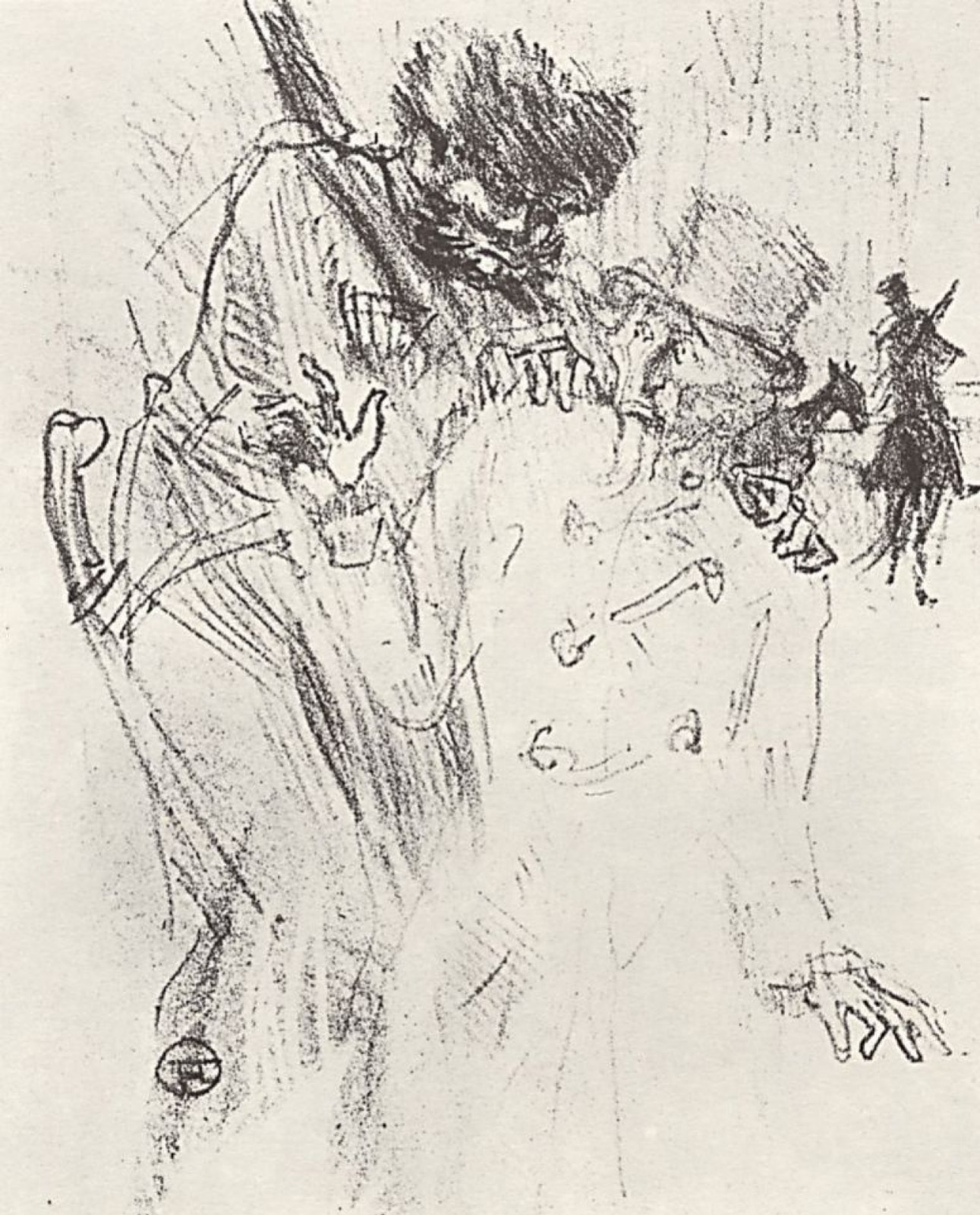
In the same way, in Clemenceau, these concessions to antisemitic discourse, whether they are based on conviction or on cunning, prepare a series of detour. A misappropriation of words when “Judaism” and “Semitism” are, by way of provocation, attributed to Christians as well as to Jews (Zola, again: “I already know Christians who are very distinguished Jews”), according to a procedure already identified in connection with the extension of the notion of “Pharisaism.” This is a paradigm shift when, to the fixism of races, Clemenceau opposes the historicity of peoples and the possibility of social reforms (what has been done by history can be undone by history and politics). It is a deft maneuver, especially when, in place of a charge against a human group, the author substitutes an indictment against plutocrats of all races in the name of humans of all origins. One can rightly judge the plea as clumsy or vain, weak, contradictory or ambiguous. But its purpose remains to ward off antisemitic hatred and to prevent the return of persecution.
The over-adaptation of a handful of Jews to the capitalist system, affirmed in these passages, should not make us forget that four of the six stories in At the Foot of Sinai have as their essential subject matter the misery of the Jews of the East. If French antisemitism had turned the Jew into a people-class, identified with the owners and bankers, the emphasis placed on this Jewish lumpenproletariat – at the time when André Spire discovered alongside Israel Zangwill the Jewish workers in the London sweatshops – makes it possible to place the social question at the center of the subject. The opposition between rich and poor runs through both Jewish and Christian societies; the story of Schlomo the brawler is that of a poor devil abused by those whose status and fortune placed them insolently above him. This is the real reversal, the revolution in the way of looking at things that Clemenceau intends to promote, and to which the title of the collection bears witness: the Jews in his story are those who are agitated “at the foot” of Sinai, at the lowest rung of the social ladder. They are the obscure and the downtrodden, an innumerable crowd of ragged people, so far from the filthy kleptocrats whose power is morbidly exaggerated by Drumont’s La Libre Parole. Even their mercantile compulsion seems only a Darwinian strategy of survival in a hostile environment. Class egoism, not racial pride, is the real scandal.
Ultimately, it is this evil power of money that seems to prevail in Clemenceau’s inspiration – to the point of giving Christian accents to this radical, and to some of its pages more prophetic than political accents. Consider the two opening stories of the collection which, in the form of parables, seem to provide the key to reading it. The first story is about a paragon of the rich Jew: Baron Moses of Goldschlammbach, heir to a fortune as ill-gotten as it is colossal, “prisoner of his wealth,” “possessed by his possession,” incapable of desiring what his billions would immediately allow him to acquire, busy preserving a capital that drives him to injustice and casts him out from humanity. The second story deals with the last link in the human chain, through the tribulations of a needy Jew: poor Schlomo, sold – like Joseph – by his brothers to the emperor’s army. Both of them finally come out of the ranks. The first, rich among the rich, finds a way of salvation in fasting, which makes him discover hunger, the human condition of the needy and the fraternal and Christian obligation to “give everything.” The second, poor among the poor, returns to the village to make the powerful atone for their iniquities, during a Yom Kippur ceremony transformed into a judicial scene. Baron Moses does not rebel against Judaism (which he has abandoned), but against the vanity of wealth and the selfishness of the possessors; Schlomo obtains reparation by taxing the rich and hastens to distribute the excess to the needy. Two Jews who, in Clemenceau’s mind, have emerged from religious legalism to recover, at the price of significant transgressions (the theft of bread under the influence of hunger for one, the violation of the liturgy of Kippur for the other), the quintessence of the prophetic message: the demand for love (Baron Moses) and the thirst for justice (Schlomo), the Passion and the Rebellion.
The man who wrote, in ambiguous circumstances, this strange and ambiguous book, often disconcerting, sometimes irritating, is indeed the same as the tireless fighter who will throw himself, a few months later, into the battle of Dreyfusism.
Clemenceau’s travelogues are not short of generous Jewish figures, such as the doctor of the poor of Busk, “whose life was spent caring for, helping, and loving men of all races and creeds: a Jew, he lavished himself on all those unfortunate people of his race whose sufferings were close to his heart through so many links of a common history. As a man, he served humanity, and with unselfishness, on whose grave his son comes to gather in a moving funeral ceremony.” Better, the unbeliever he finds moving words to describe, on the occasion of a funeral, these Jewish prayers during which “haggard faces, with a smile contracted by misery, were ennobled with the austere gravity of the highest sensations of the earth,” these fervent prayers that make a cohort of filthy beggars as many “pontiffs.” Recounting the return of an assimilated Jew to his native land, Clemenceau salutes the fidelity of an emancipated human brother whom his “childhood memories and the natural solidarity of a great tragic race” will lead to finance the synagogue of Busk, thus bringing “his stone to the edifice of ideals where his forefathers took shelter.”
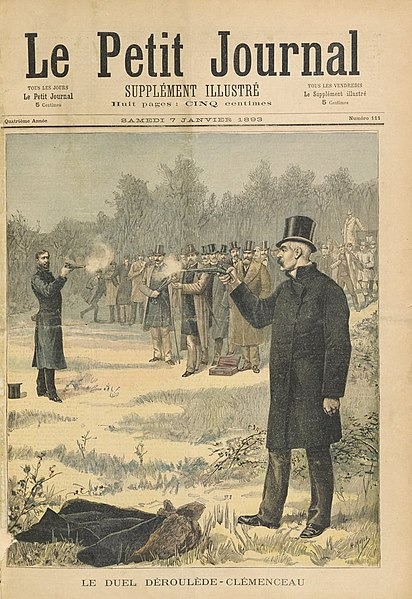
Is it necessary to specify this? Clemenceau was a writer and a humanist. He often satirizes, but never humiliates. Resentment is not his forte. Even the anecdote about the dishonest optician is presented as a humorous account – and without human death – of a clever trick carried out by a sourpuss who almost forces admiration, if not sympathy. Was it a harmless and pleasant transposition of Clemenceau’s naivety that cost him so dearly during the Panama scandal? Would Cornelius Herz have, like that trickster Mr. Mayer, clouded his vision? The fact remains that the goy (here the “Aryan”) who is swindled by a shrewd Jew becomes a comical subject which is not accompanied here by any anathema. One can list the dubious or regrettable passages in Clemenceau’s stories, those that would earn him today opprobrium or the scissors; one will find no outburst of hatred, no trace of rancid hostility. The man who wrote, in ambiguous circumstances, this strange and ambiguous book, often disconcerting, sometimes irritating, is indeed the same as the tireless fighter who will throw himself, a few months later, into the battle of Dreyfusism, with a brilliance, a constancy and a generosity that it would be unwise to bargain against.
Philippe Zard
Philippe Zard is Professor of Comparative Literature at the University of Paris-Nanterre. He has recently published “De Shylock à Cinoc. Essai sur les judaïsmes apocryphes” (Classique Garnier, 2018) and a critical edition (prefaces and notes) of Albert Cohen’s novel tetralogy: “Solal et les Solal”, coll. Quarto, Gallimard, 2018.
Notes
| 1 | See in French the following article: « Antisémitisme », Dictionnaire Clemenceau (dir. Sylvie Brodziak et Samuël Tomei, Robert Laffont, 2017. |
| 2 | For information on the relationship between Toulouse-Lautrec and Clemenceau see: Bertrand Tillier, « Clemenceau et Toulouse-Lautrec, Au pied du Sinaï (1898), collaboration ou quiproquo ? », dans Clemenceau et les arts, CVRH, 2016 |
| 3 | The brothers publish a series of exotic (and one might say Orientalist) Jewish tales, including L’Ombre de la Croix, La Rose de Sâron, Un Royaume de Dieu, Quand Israël est roi, L’An prochain à Jérusalem ! and a Petite histoire des Juifs. |
| 4 | See Richard Zrehen’s introduction to an earlier edition of this volume, d’Au pied du Sinaï, coll. L’Arbre de Judée, Les Belles Lettres, 2000. |
| 5 | Clemenceau’s full quote in context reads: “Christianity being no other than a Jewish sect spread among the Gentiles […] It must be my unconscious Christianity that prevents me from shouting: Death to the Jews! I would be afraid of offending St. Joseph, St. Peter, St. Matthew and so many others, not to mention the Virgin Mary and her son who is God. The first places in the Christian paradise are occupied by the Jews. One would think one was on earth.” (June 13, 1898) |

